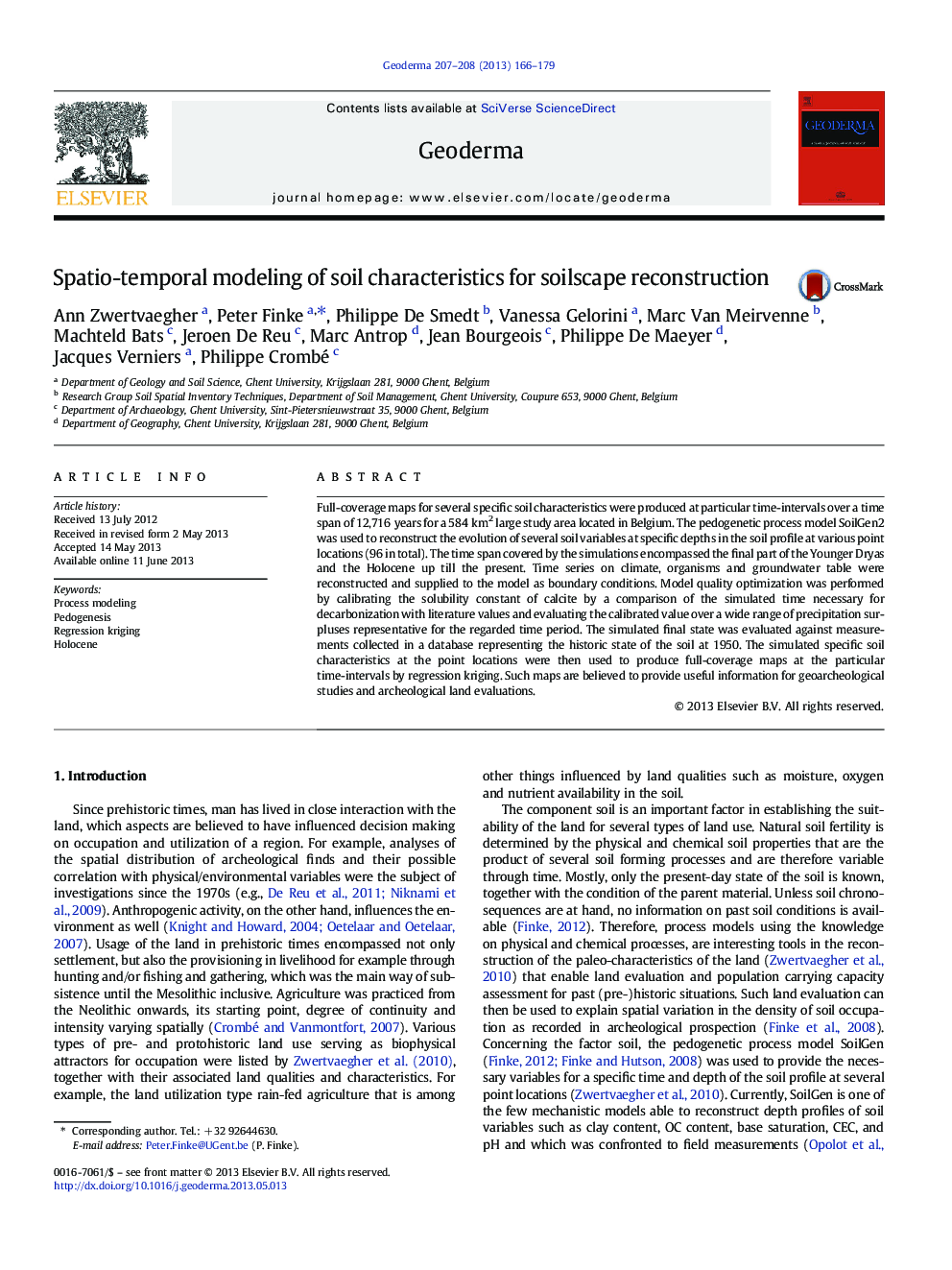| Article ID | Journal | Published Year | Pages | File Type |
|---|---|---|---|---|
| 6409165 | Geoderma | 2013 | 14 Pages |
â¢We modeled the evolution of soil variables using the model SoilGen2.â¢We produced maps at points in time using model outcomes and regression kriging.â¢A better reconstruction of the boundary conditions can improve model quality.â¢Adding the podzolization process can improve model quality.
Full-coverage maps for several specific soil characteristics were produced at particular time-intervals over a time span of 12,716Â years for a 584Â km2 large study area located in Belgium. The pedogenetic process model SoilGen2 was used to reconstruct the evolution of several soil variables at specific depths in the soil profile at various point locations (96 in total). The time span covered by the simulations encompassed the final part of the Younger Dryas and the Holocene up till the present. Time series on climate, organisms and groundwater table were reconstructed and supplied to the model as boundary conditions. Model quality optimization was performed by calibrating the solubility constant of calcite by a comparison of the simulated time necessary for decarbonization with literature values and evaluating the calibrated value over a wide range of precipitation surpluses representative for the regarded time period. The simulated final state was evaluated against measurements collected in a database representing the historic state of the soil at 1950. The simulated specific soil characteristics at the point locations were then used to produce full-coverage maps at the particular time-intervals by regression kriging. Such maps are believed to provide useful information for geoarcheological studies and archeological land evaluations.
